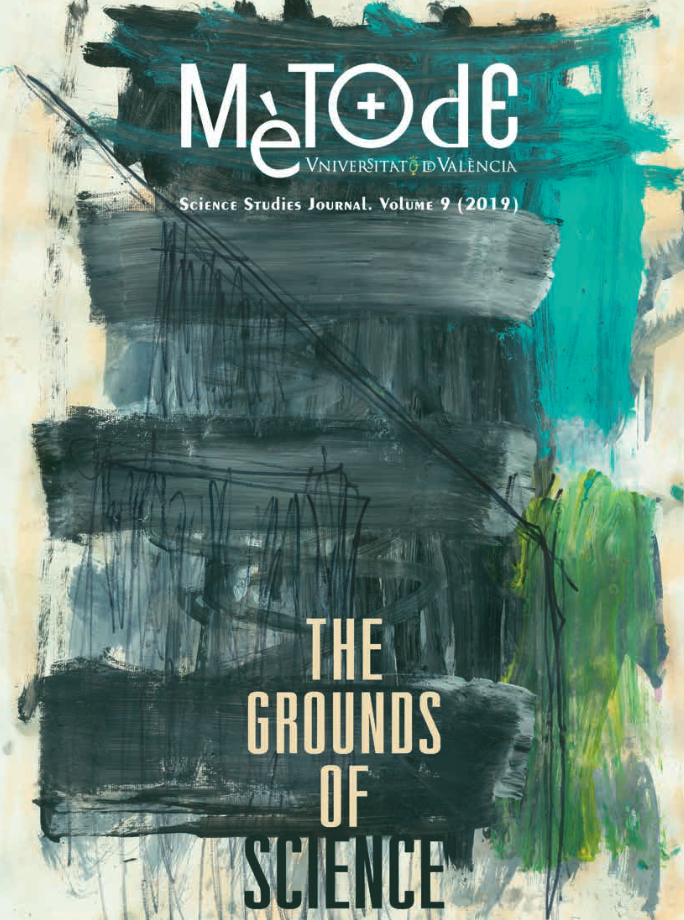Quan la tecnologia va més ràpid que la comprensió: Propietats poc intuïtives de les xarxes neuronals profundes
DOI:
https://doi.org/10.7203/metode.9.11035Paraules clau:
aprenentatge profund, aprenentatge automàtic, xarxes neuronals, propietats poc intuïtives Resum
Resum
L’aprenentatge profund és un tema indiscutiblement candent, no sols entre acadèmics i indústria, sinó també en la societat i en els mitjans de comunicació. Les raons d’aquesta popularitat creixent són múltiples: una disponibilitat sense precedents de dades i potència de càlcul, l’aparició d’algunes metodologies innovadores, trucs tècnics menors però significatius, etc. No obstant això, és curiós que l’èxit actual i la pràctica de l’aprenentatge profund pareixen no estar correlacionats amb la comprensió més teòrica i formal d’aquest camp. A causa d’això, l’avantguarda tecnològica de l’aprenentatge profund presenta una sèrie de propietats o situacions poc intuïtives. En aquest text es ressalten algunes d’aquestes propietats poc intuïtives, i es tracta de mostrar treballs recents rellevants i de posar de relleu la necessitat de saber més sobre la matèria, ja siga mitjançant mètodes empírics o formals.
 Descàrregues
Descàrregues
 Referències
Referències
Cybenko, G. (1989). Approximation by superposition of sigmoidal functions. Mathematics of Control, Signals and Systems, 2(4), 303–314. doi: 10.1007/BF02551274
Dauphin, Y. N., Pascanu, R., Gulcehere, C., Cho, K., Ganguli, S., & Bengio, Y. (2014). Identifying and attacking the saddle point problem in high-dimensional non-convex optimization. In Z. Ghahramani, M. Welling, C. Cortes, N. D. Lawrence, & K. Q. Weinberger (Eds.), Advances in neural information processing systems, 27(pp. 2933–2941). New York, NY: Curran Associates Inc.
Erhan, D., Bengio, Y., Courville, A., Manzagol, P.-A., Vincent, P., & Bengio, S. (2010). Why does unsupervised pre-training help deep learning? Journal of Machine Learning Research, 11, 625–660.
Gilmer, J., Metz, L., Faghri, F., Schoenholz, S. S., Raghu, M., Wattenberg, M., & Goodfellow, I. (2018). Adversarial spheres. Retrieved from https://arxiv.org/abs/1801.02774
Goodfellow, I., Vinyals, O., & Saxe, A. M. (2015). Qualitatively characterizing neural network optimization problems. In Proceedings of the International Conference on Learning Representations (ICLR 2016). San Diego, CA, USA: ICLR. Retrieved from https://arxiv.org/abs/1412.6544
Han, S., Mao, H., & Dally, W. J. (2016). Deep compression: Compressing deep neural networks with pruning, trained quantization and Huffman coding. In Proceedings of the International Conference on Learning Representations (ICLR 2016). San Juan, Puerto Rico: ICLR. Retrieved from https://arxiv.org/abs/1510.00149
Hinton, G., Vinyals, O., & Dean, J. (2014). Distilling the knowledge in a neural network. In NIPS 2014 Deep Learning and Representation Learning Workshop. Montreal, Canada: NIPS. Retrieved from https://arxiv.org/abs/1503.02531
Kawaguchi, K. (2016). Deep learning without poor local minima. In D. D. Lee, M. Sugiyama, U. V. Luxburg, I. Guyon, & R. Garnett (Eds.), Advances in neural information processing systems, 29(pp. 586–594). New York, NY: Curran Associates Inc.
Larochelle, H. (2017, 28 june). Neural networks II. Deep Learning and Reinforcement Learning Summer School. Montreal Institute for Learning Algorithms, University of Montreal. Retrieved on 12 January 2018 from https://mila.quebec/en/cours/deep-learning-summer-school-2017/slides/
LeCun, Y., Bengio, Y., & Hinton, G. (2015). Deep learning. Nature, 521, 436–444. doi: 10.1038/nature14539
LeCun, Y., Bottou, L., Orr, G. B., & Müller, K.-R. (2002). Efficient backprop. In G. B. Orr & K.-R. Müller (Eds.), Neural networks: Tricks of the trade. Lecture notes in computer science. Volume 1524 (pp. 9–50). Berlin: Springer. doi: 10.1007/3-540-49430-8
Li, H., Xu, Z., Taylor, G., & Goldstein, T. (2017). Visualizing the loss landscape of neural nets. Retrieved from https://arxiv.org/abs/1712.09913
McCloskey, M., & Cohen, N. (1989). Catastrophic interference in connectionist networks: The sequential learning problem. Psychology of Learning and Motivation, 24, 109–165. doi: 10.1016/S0079-7421(08)60536-8
Nguyen, A., Yosinski, J., & Clune, J. (2015). Deep neural networks are easily fooled: High confidence predictions for unrecognizable images. In Proceedings of the IEEE International Conference on Computer Vision and Pattern Recognition (CVPR) (pp. 427–436). Boston, MA: IEEE. doi: 10.1109/CVPR.2015.7298640
Papernot, N., McDaniel, P., Goodfellow, I., Jha, S., Celik, Z. B., & Swami, A. (2017). Practical black-box attacks against machine learning. In Proceedings of the 2017 ACM Asia Conference on Computer and Communications Society (Asia-CCCS) (pp. 506–619). New York, NY: Association for Computing Machinery. doi: 10.1145/3052973.3053009
Serrà, J., Surís, D., Miron, M., & Karatzoglou, A. (2018). Overcoming catastrophic forgetting with hard attention to the task. In Proceedings of the 35th International Conference on Machine Learning (ICML) (pp. 4555–4564). Stockholm: ICML.
Szegedy, C., Zaremba, W., Sutskever, I., Bruna, J., Erhan, D., Goodfellow, I., & Fergus, R. (2014). Intriguing properties of neural networks. In Proceedings of the International Conference on Learning Representations (ICLR). Banff, Canada: ICLR. Retrieved from https://arxiv.org/abs/1312.6199
Wolfram, S. (2002). A new kind of science. Champaign, IL: Wolfram Media.
Yosinski, J., Clune, J., Bengio, Y., & Lipson, H. (2014). How transferable are features in deep neural networks? In Z. Ghahramani, M. Welling, C. Cortes, N. D. Lawrence, & K. Q. Weinberger (Eds.), Advances in neural information processing systems, 27 (pp. 3320–3328). New York, NY: Curran Associates Inc.
Zhang, C., Bengio, S., Hardt, M., Recht, B., & Vinyals, O. (2017). Understanding deep learning requires rethinking generalization. In Proceedings of the International Conference on Learning Representations (ICLR). Toulon, France: ICLR. Retrieved from https://arxiv.org/abs/1611.03530
Zoph, B., & Le, Q. V. (2016). Neural architecture search with reinforcement learning. Proceedings of the International Conference on Learning Representations (ICLR). Toulon, France: ICLR. Retrieved from https://arxiv.org/abs/1611.01578
Descàrregues
Publicades
Com citar
-
Resum1500
-
PDF 653
Número
Secció
Llicència
![]()
Tots els documents inclosos en OJS són d'accés lliure i propietat dels seus autors.
Els autors que publiquen en aquesta revista estan d'acord amb els següents termes:
- Els autors conserven els drets d'autor i garanteixen a la revista el dret a la primera publicació del treball, llicenciat baix una llicència de Reconeixement-NoComercial-SenseObraDerivada 4.0 Internacional de Creative Commons, que permet a altres compartir el treball amb un reconeixement de l'autoria del treball i citant la publicació inicial en aquesta revista.
- Es permet i s'anima els autors a difondre la versió definitiva dels seus treballs electrònicament a través de pàgines personals i institucionals (repositoris institucionals, pàgines web personals o perfils a xarxes professionals o acadèmiques) una vegada publicat el treball.





